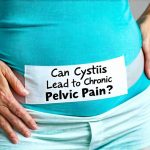Chronic cystitis, often referred to as interstitial cystitis/bladder pain syndrome (IC/BPS), is a complex condition characterized by persistent bladder discomfort, pain, and urinary frequency/urgency. It significantly impacts the quality of life for many women, extending beyond simple physical symptoms to affect emotional well-being, relationships, and daily activities. Unlike typical bacterial cystitis which responds to antibiotics, chronic cystitis isn’t usually caused by infection, making diagnosis and treatment more challenging. Understanding the nuances of this condition is crucial for effective management, as there’s no single cure-all solution – instead, a multi-faceted approach tailored to individual needs is generally most successful.
The experience of chronic cystitis varies greatly from person to person. Some women describe a constant burning sensation in their bladder, while others report intermittent pain that flares up with certain foods or activities. Common symptoms include a frequent and pressing need to urinate (frequency and urgency), often even when the bladder isn’t full, as well as pelvic pain that can extend to the abdomen, lower back, and thighs. These symptoms can be debilitating, leading to anxiety, depression, and social isolation. It’s important to remember that experiencing chronic cystitis is not a sign of weakness or something to be ashamed of; it’s a real medical condition requiring understanding and support.
Understanding Chronic Cystitis & Its Potential Causes
Chronic cystitis isn’t fully understood, and research continues to uncover potential contributing factors. It’s believed to be multifactorial, meaning several things can play a role in its development. One prominent theory centers around defects in the bladder lining – specifically, the urothelium – which normally protects the bladder wall from urine. In some individuals with IC/BPS, this protective layer may become compromised, allowing irritants to cause inflammation and pain. Another aspect involves mast cells, immune cells that release histamine and other chemicals; an overactive or dysregulated mast cell response can contribute to bladder irritation and symptoms.
However, it’s not just a purely biological issue. Psychological factors like stress, anxiety, and past trauma can also exacerbate symptoms. There’s growing evidence of a link between chronic pain conditions and emotional well-being – often creating a vicious cycle where pain leads to stress, which then intensifies the pain. Furthermore, hormonal fluctuations (particularly related to menstruation or menopause) may impact symptom severity in some women. It’s crucial to recognize that chronic cystitis is rarely solely physical; addressing the psychological aspects can be just as important as medical interventions.
Finally, while not a cause itself, many people with IC/BPS report sensitivities to specific foods and beverages. These vary widely but commonly include caffeine, alcohol, citrus fruits, spicy foods, artificial sweeteners, and tomatoes. Identifying and minimizing trigger foods is often an essential part of symptom management (more on this later). Consider exploring resources like low-acid meal design to help guide your dietary choices.
Diagnostic Challenges & What To Expect
Diagnosing chronic cystitis can be a lengthy process because its symptoms overlap with other conditions, like urinary tract infections (UTIs), overactive bladder syndrome, and pelvic inflammatory disease. A thorough medical history is the first step; your doctor will ask about your symptoms, their severity, what makes them better or worse, and your overall health. A urine test is usually performed to rule out a UTI. However, because chronic cystitis isn’t typically caused by bacteria, this test is often negative.
Beyond initial tests, more specialized evaluations may be necessary. These can include: – Cystoscopy: a procedure where a thin, flexible tube with a camera (cystoscope) is inserted into the bladder to visualize its lining. In IC/BPS, the bladder wall might appear inflamed or have tiny hemorrhages. – Potassium chloride sensitivity test: this tests how your bladder reacts to potassium chloride, which can cause pain in individuals with IC/BPS. – Bladder biopsy: in some cases, a small sample of bladder tissue is taken for microscopic examination to rule out other conditions and assess the bladder lining. It’s important to remember that these tests aren’t always definitive, and diagnosis often relies on excluding other possibilities and considering the overall clinical picture.
The diagnostic process can be frustrating, but persistence in seeking answers and working closely with a healthcare team specializing in pelvic pain is crucial. Don’t hesitate to seek a second opinion if you feel your concerns aren’t being adequately addressed. A diagnosis, even without a definitive ‘cure’, provides validation and opens the door to management strategies that can improve quality of life. Regular prescription review intervals are also important for ensuring optimal medication management.
Navigating Treatment Options: A Multi-faceted Approach
There’s no one-size-fits-all treatment for chronic cystitis due to its complexity. Instead, the best approach is highly individualized and often involves a combination of therapies. Initially, conservative measures are usually recommended, including lifestyle modifications such as dietary changes (eliminating trigger foods), stress management techniques (yoga, meditation, mindfulness), and pelvic floor physical therapy. Pelvic floor dysfunction can contribute to bladder symptoms, and strengthening or relaxing these muscles can provide relief for some women.
Pharmacological interventions may also be considered. These include: – Pentosan polysulfate sodium (Elmiron): an oral medication sometimes used to help restore the bladder lining, although its use is controversial due to potential long-term side effects. – Antihistamines or mast cell stabilizers: these can help reduce inflammation and urgency in some patients. – Low-dose tricyclic antidepressants: while typically used for depression, low doses can also alleviate pain and urinary frequency. It’s vital to discuss the risks and benefits of any medication with your doctor.
More advanced treatments might include bladder instillations (introducing medications directly into the bladder), neuromodulation (using electrical impulses to modulate nerve activity), or in rare cases, surgery. However, these are typically reserved for patients who haven’t responded to more conservative measures. The goal of treatment isn’t necessarily eradication of symptoms but rather symptom management and improvement in quality of life. Consider maintenance therapy as a long-term strategy for managing your condition.
Lifestyle Adjustments & Self-Management Strategies
Living with chronic cystitis requires proactive self-management. While medical interventions are important, taking control of your daily habits can significantly impact symptom severity. Dietary modifications are often the first line of defense for many women. Keeping a detailed food diary to identify trigger foods is incredibly helpful. Common culprits include: – Caffeine – Alcohol – Citrus fruits and juices – Tomatoes and tomato-based products – Spicy foods – Artificial sweeteners – Chocolate
Eliminating or reducing these triggers can lead to noticeable improvements. Hydration is also crucial, but avoid excessive fluid intake as this can worsen urgency. Aim for a consistent amount of water throughout the day, avoiding large volumes at once. Beyond diet, stress management techniques are essential. Chronic stress can exacerbate bladder symptoms, so finding healthy ways to cope with stress is paramount. This could involve: – Mindfulness meditation – Yoga or tai chi – Deep breathing exercises – Spending time in nature – Engaging in hobbies you enjoy
Building a Support System & Seeking Emotional Wellbeing
Chronic pain conditions like chronic cystitis often lead to feelings of isolation and depression. It’s vital to build a strong support system – connecting with family, friends, or support groups can provide emotional validation and practical assistance. Sharing your experiences with others who understand what you’re going through can be incredibly empowering. There are numerous online and in-person support groups specifically for people with IC/BPS.
Don’t hesitate to seek professional help if you’re struggling emotionally. A therapist specializing in chronic pain management can provide coping strategies, address anxiety or depression, and help you navigate the challenges of living with a chronic condition. Remember that taking care of your mental health is just as important as taking care of your physical health.
The Role of Pelvic Floor Physical Therapy
Pelvic floor dysfunction often coexists with chronic cystitis and can contribute to symptoms. The pelvic floor muscles support the bladder, uterus, and rectum, and if these muscles are weak, tight, or uncoordinated, it can worsen urinary frequency, urgency, and pain. A qualified pelvic floor physical therapist can assess your pelvic floor function and develop a personalized treatment plan. This may involve: – Exercises to strengthen or relax the pelvic floor muscles – Biofeedback training to learn how to control these muscles effectively – Manual therapy techniques to release tension in the pelvic floor and surrounding tissues – Education on proper posture and body mechanics
Pelvic floor physical therapy isn’t always a quick fix, but it can be a highly effective part of a comprehensive treatment plan for many women with chronic cystitis. It empowers patients to take control of their bodies and improve their function.
It’s important to remember that managing chronic cystitis is an ongoing process. There will likely be ups and downs, flare-ups and periods of remission. The key is to stay informed, advocate for your needs, and work collaboratively with a healthcare team to find what works best for you. If you also experience pain from residual stones, consider exploring managing chronic pain.





















